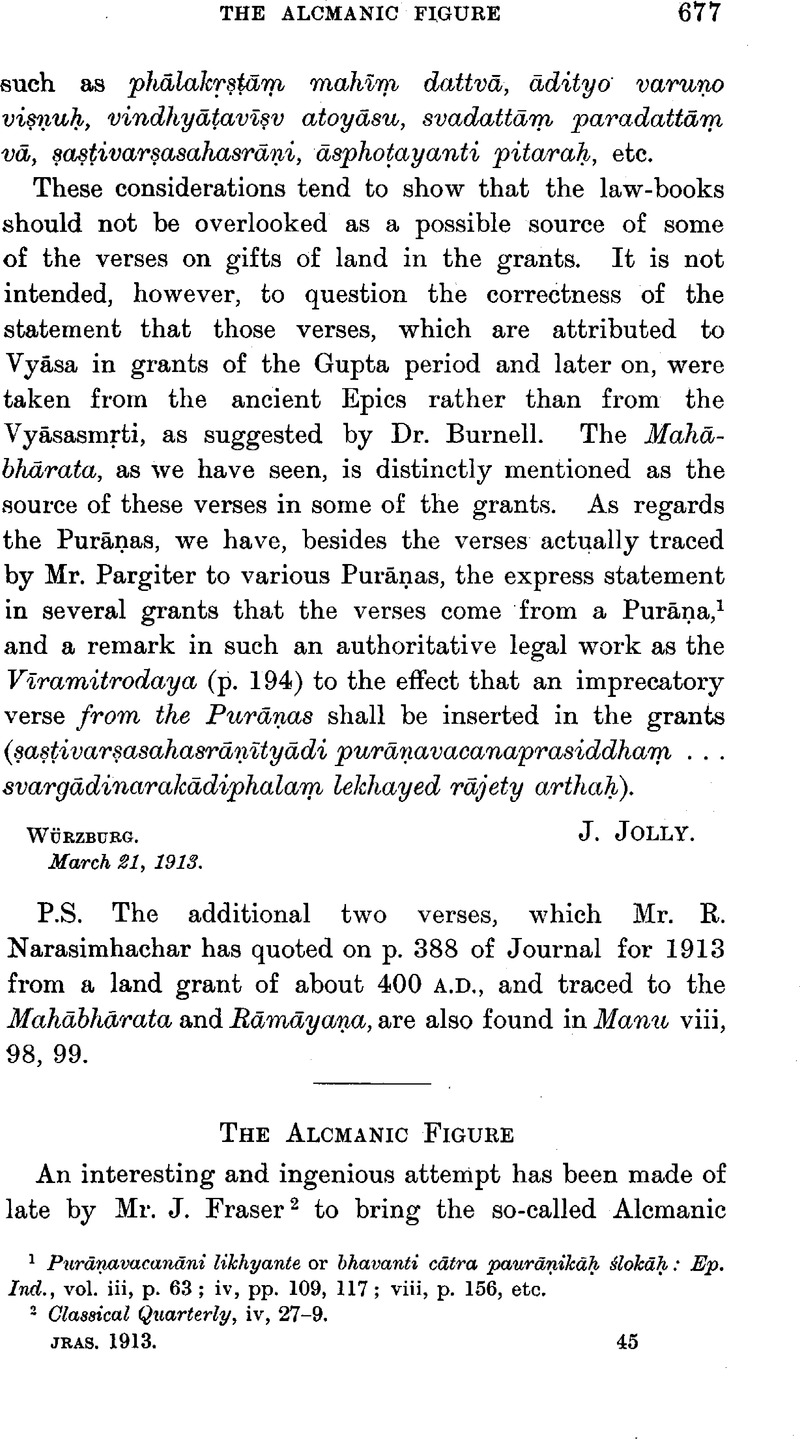No CrossRef data available.
Published online by Cambridge University Press: 15 March 2011

page 677 note 2 Classical Quarterly, iv, 27–9.Google Scholar
page 678 note 1 See a careful list in JAOS. xxxii, 41 seqq.
page 678 note 2 Attindische Syntax, p. 98Google Scholar; Vergleichende Syntax, i, 137 seqq.Google Scholar
page 678 note 3 Religion Vedique, ii, 116.Google Scholar
page 678 note 4 KZ. xxii, 8.
page 678 note 5 KZ. xxiii, 309.
page 679 note 1 JAOS. xxxii, 56, 57Google Scholar. Wackernagel (Altindische Grammatik, ii, 1. 150, 151Google Scholar) and Macdonell (Vedic Grammar, p. 155Google Scholar) ascribe the Vedic dual Dvandva to the elliptic dual and the use of asyndeton.
page 679 note 2 See KZ. xxiii, 308. This example is reasonably dealt with by Delbrück, , Synt. Forsch, iv, 19, 20.Google Scholar
page 680 note 1 See Oliphant, JAOS. xxxii, 45Google Scholar, n. 1. The passage in Wackernagel to which Oliphant refers is Altind. Gramm, ii, 1Google Scholar. 150, but he does not himself lay much stress on the view.
page 680 note 2 Curiously enough, neither Kühner-Gerth nor Gildersleeve nor Mr. Fraser cites Od. xiv, 216, where the presence of τε—κα again makes the case simple. The psychological argument is irresistible in cases where there is a plural after a disjunctive, as in Pindar, P. vi, 13; Euripides, Alc. 360–2; Herondas, ii, 31.